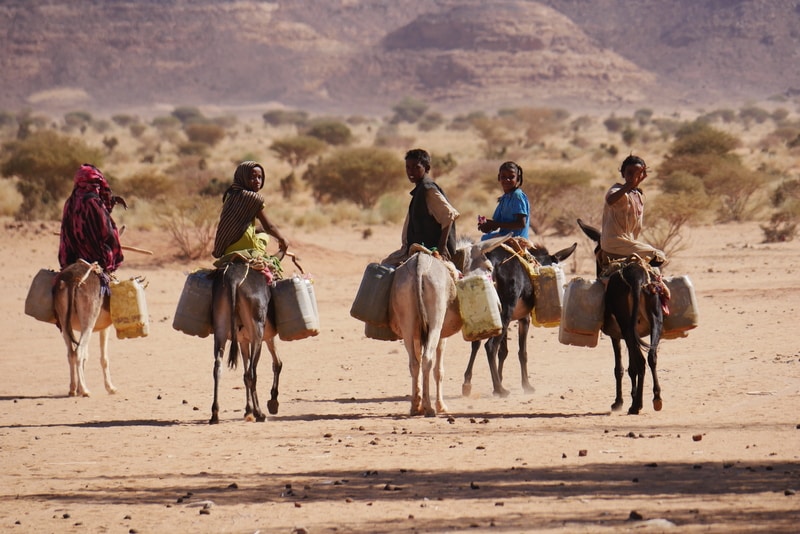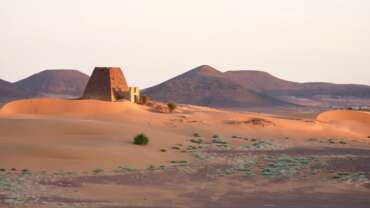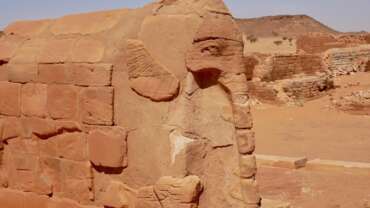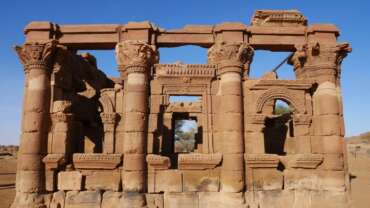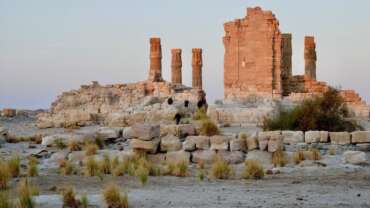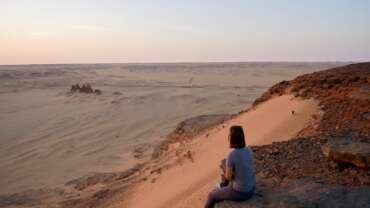Experiences in Sudan
With Sahara desert and great Nile covering most of its length, the republic of Sudan with its colorful past and interesting cultural elements is attracting visitors from all over the world now a days. Sudan is bordered by neighbors like Egypt, Ethiopia, Libya, Chad etc and water body like Red Sea. Not every country in the world has such interesting natural landmarks as well as historic past like Sudan. Khartoum is the capital which has excellent staying facility for guests. A tourist can plan his or her tour staying in Khartoum.
The Nubian Pyramids
By the word pyramids the images that come up in mind are the great massive structures of Egypt. Built after 800 or so years later after Egypt with same kind of expertise the pyramids of Meroe in Nubian desert in Sudan are little known. These pyramids are much smaller in size, brick built too. These were built during the local Kushite kingdom. Though not massive in size but a tourist can receive a visual jolt when he or she witnesses such amazing structures on desert over a certain region.
Khartoum
Khartoum the capital of modern Sudan is the one of the largest cities in the country. Khartoum is politically an important place from long ago. There were historic battle and sieges took place like conflict between British army and force of Mahdi in 19th century. Now a tourist can view all the historic information about the city and the country in the National Museum in Khartoum. There are other museums too. The other attractions of the capital city include the camel market of Omdurman.
The Red Sea
The parting of Red Sea in Bible is known by almost everybody in this planet. So all tourists pay a visit to this magnificent blue green water body in Sudan. The coral riffs have added extra shade to the beauty of the Red Sea. There are good arrangements here in this place so that a tourist can stay and enjoy. There is arrangement for diving and enjoy the beauty of coral riff underwater also.
The Ruins of Musawwarat es-Sufra
Situated 180 kms from the city of Khartoum these amazing and enigmatic ruins in the middle of desert can be dated back to 3rd century BC. There are varied opinions among historians and archeologists about the exact purpose of these ruins. Suggestions have come in forms of pilgrimage spot, medical center, educational institution as well as training center for elephants in ancient time. However a tourist can enjoy the ruins and interesting carvings on those.
Dinder National Park
No visit to an African nation is complete without a visit to a wildlife park. While staying in Khartoum you can visit Dinder National Park near Ethiopian border. This place is one of the biggest game reserves in the continent. This national park is said to contain 27 different species of animals which include big predators also. There are many species of birds that include migratory birds too. A must visit place for a tourist with family in Sudan.
Meroe
The onetime epicentre of the ancient Napata Kingdom is a truly otherworldly place to explore. Set out between the ochre-hued rises of the Sudanese desert, just north of the capital, its comprised of over 200 individual pyramid structures, along with a whole serious of fascinating ruins of another type.
This bears all the hallmarks of a grand architectural undertaking in the same ilk as the Nubian cities of old, and today the whole area has been accredited by UNESCO, and archaeological findings have confirmed the presence of an advanced civilisation of iron smelters and traders with mercantile links all the way to China and India!
Suakin
Sand-blown Suakin stands tall and firm against the gusts of the Red Sea. An iconic and historic place that still touts its medieval past with pride, it was once one of the major staging points for Muslim pilgrims making the hop across to Arabian Mecca from North Africa.
Consequently, there are gilded mosques and interesting religious structures carved from coral stone, all of which mingle with the occasional Ottoman relic – Suakin later succumbed to the Turks, but fell into swift decline as European traders opened up routes around the Cape of Good Hope.
Kerma
Another great ancient relic left on the meanders of the Nile River from the civilisations of old, Kerma promises to be an experience like no other in the country.
At its center rises the soaring and mighty Western Deffufa – one of the largest and oldest adobe worshipping houses on the planet! And once you’re done getting over the sheer awesomeness of that centrepiece, you can move to tour the seemingly endless array of ruins that surround it (one of the largest in all of North African, in fact). These go from burial complexes to the unearthed statues of old Nubian deities, all of which boast a history going back more than 5,000 years!
Sanganeb National Park
The first and only oceanic national park in all of Sudan, the Sanganeb National Park is made up of shallow reef habitats that showcase the sheer biodiversity of the Red Sea in all its glory.
The protected area is adjoined directly to the jetties and harbors of Port Sudan, making it a very accessible place to visit. Divers can go underwater and case out layered coral gardens, witness multi-coloured tropical fish, and understand why the spot was added to the UNESCO list back in the early 1990s (along with the greater Dungonab Bay). There’s also an old lighthouse where snorkelers can moor up and spend some days enjoying the wonder!
Port Sudan
Situated more than 20 hours by rattling train through the dusty deserts of upper Sudan from the capital, the country’s only large port is home to nearly 500,000 people. It crashes down to the sparkling waters of the Red Sea in a medley of creaking cranes and endless depot complexes, all ticking over to the lurch of massive tankers prepping for the Suez Canal and the chatter of down-to-earth dock workers from all over the globe.
For tourists, it’s the diving that really takes the biscuit though – it’s undeveloped, unchartered and offers a cheap way to see the coral-clad depths of this crystal-clear sea.
Wadi Halfa
One of the northernmost towns in the nation, the low-rise sprawl of Wadi Halfa sits between two ridges of desert rock and the waters of Lake Nubia. While today it bustles with the coming and going of traders from Egypt, its main draw lies in its onetime inhabitants from the Middle Kingdom period.
And while Wadi Halfa itself might not be of mega importance in the search for Nubian treasures, the occurrence of Lake Nasser in the 1970s meant that archaeologists came here to focus their efforts in recovering the relics that had been submerged up and down the valley.



